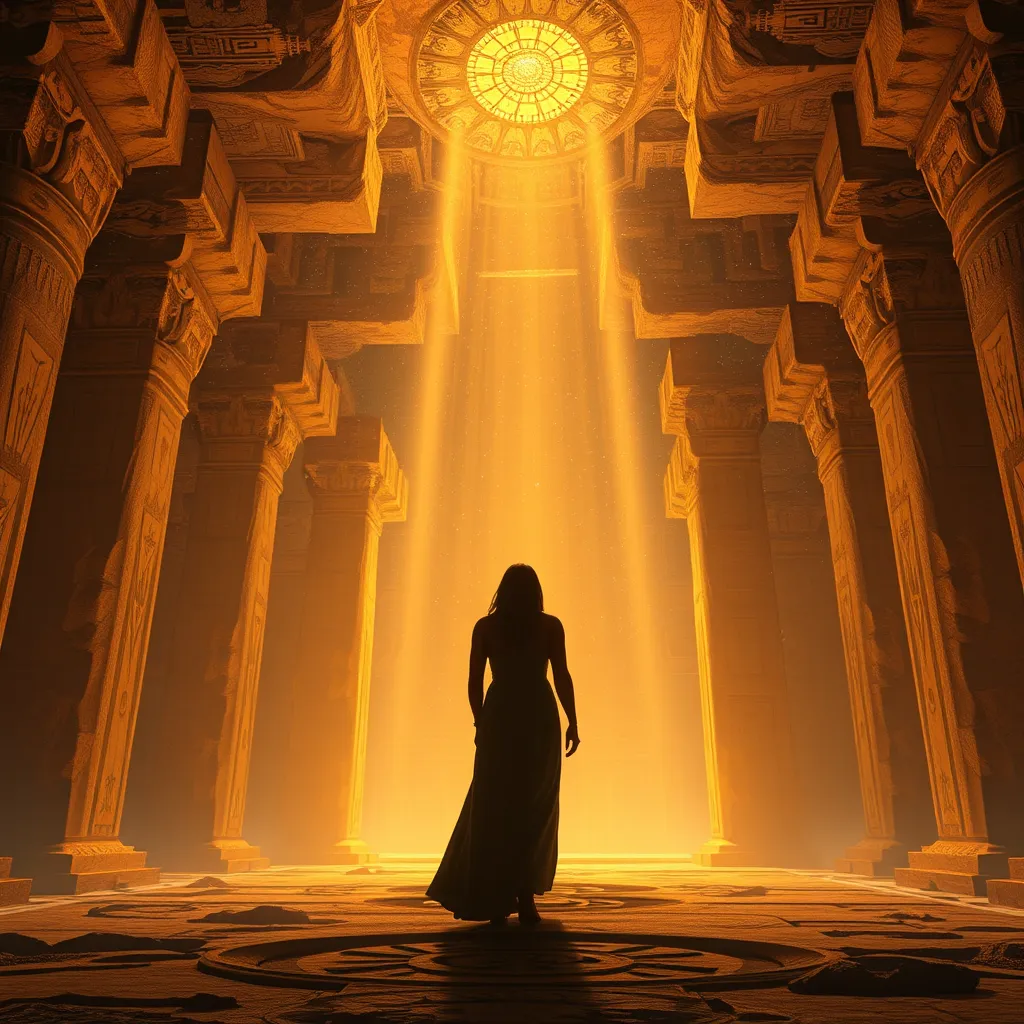The Duat: A Realm of Spiritual Exploration
I. Introduction to the Duat
The Duat, in ancient Egyptian mythology, is the realm of the dead, a mysterious and complex underworld that plays a crucial role in the spiritual beliefs of the ancient Egyptians. It is not merely a place of darkness and decay but is imbued with significant symbolism regarding life, death, and the afterlife. The Duat represents a journey through a spiritual landscape where the soul undergoes transformation and judgment, reflecting the Egyptians’ profound understanding of existence beyond the physical world.
II. The Origins of the Duat in Egyptian Cosmology
The concept of the Duat has deep roots in ancient Egyptian cosmology, evolving over centuries as religious beliefs and practices transformed. Initially, it was a shadowy place associated with the setting sun, as the sun god Ra traveled through it nightly, battling chaos before rebirth at dawn.
Key texts such as the Book of the Dead provide invaluable insights into the Duat’s significance, detailing the journey of the deceased and the various challenges they faced. These texts serve as guides for navigating the afterlife, emphasizing the importance of knowledge, preparation, and moral integrity.
III. The Geography of the Duat
The Duat is depicted as a vast, multi-faceted landscape, filled with various geographical features that symbolize aspects of the afterlife journey. Some of the notable landscapes include:
- Rivers: Often associated with the Nile, these rivers symbolize the journey of the soul and the flow of time.
- Mountains: Representing obstacles and challenges, these heights are often where deities reside.
- Fields of Reeds: A place of peace and reward for the righteous, symbolizing eternal life.
Each element within the Duat carries symbolic meaning, reflecting the moral and spiritual lessons essential for the soul’s journey.
IV. The Afterlife Journey: Passage through the Duat
In the context of the afterlife, the deceased play an active role in navigating the Duat. The journey is fraught with challenges, requiring the soul to demonstrate its worthiness through knowledge of spells and rituals.
Several key deities and guardians are encountered along the way, including:
- Osiris: The god of the afterlife, who judges the souls.
- Anubis: The god of embalming and protector of graves, who guides souls through the Duat.
- Thoth: The god of wisdom, who assists in the judgment process.
These deities symbolize various aspects of the journey, from guidance and protection to judgment and wisdom.
V. The Trials and Judgments in the Duat
One of the most significant events in the Duat is the Weighing of the Heart ceremony. Here, the heart of the deceased is weighed against the feather of Ma’at, the goddess of truth and justice. This ritual determines the fate of the soul:
- If the heart is lighter than the feather, the soul is deemed worthy and granted passage to the Field of Reeds.
- If heavier, the soul faces annihilation, devoured by the monster Ammit.
This trial represents the eternal struggle between good and evil and underscores the importance of moral integrity in life.
VI. Symbolism and Interpretation of the Duat
The Duat can be interpreted as a profound metaphor for inner spiritual challenges. The journey through the Duat mirrors the struggles individuals face in their lives, reflecting the need for self-examination, moral fortitude, and resilience. In modern spirituality, the Duat serves as a symbol of personal transformation and the quest for enlightenment.
Contemporary interpretations often draw parallels between the Duat and various spiritual practices that emphasize inner journeys, such as:
- Meditation and self-reflection.
- Psychological journeys through shadow work.
- Ritualistic practices aimed at self-discovery and healing.
VII. The Duat in Art and Literature
The Duat’s representation in ancient Egyptian art is rich and varied, often depicted in tomb paintings and inscriptions that illustrate the journey of the deceased. These artistic expressions served as both a guide and a source of comfort for the living, emphasizing the connection between life and the afterlife.
Furthermore, the influence of the Duat can be seen in later literary works and spiritual practices. Themes of journey, judgment, and transformation echo through various cultures, highlighting the universal nature of the quest for understanding and meaning in life.
VIII. Conclusion: The Legacy of the Duat in Spiritual Exploration
The Duat remains a powerful symbol in contemporary spiritual beliefs, representing the ongoing journey of self-discovery and the quest for deeper understanding. Its enduring impact is evident in how individuals approach their own spiritual paths, often reflecting on the lessons of morality, integrity, and transformation that the Duat embodies.
As we explore our own journeys, the Duat serves as a reminder that the path to enlightenment is fraught with challenges, but it is through these trials that we grow, learn, and ultimately discover our true selves.




